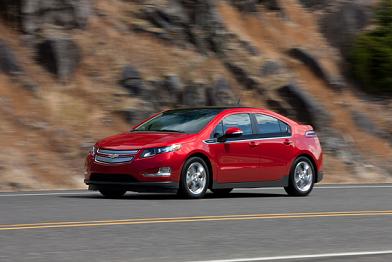Electric Vehicles' Popularity Making Inroads In U.S.
 Two years into electric vehicles being broadly sold to consumers - notably, through the Chevy Volt and the Nissan Leaf - they remain a fraction of the nation's passenger fleet, due partly to cost.
Two years into electric vehicles being broadly sold to consumers - notably, through the Chevy Volt and the Nissan Leaf - they remain a fraction of the nation's passenger fleet, due partly to cost.
But nationwide, more than 40,000 plug-in electric vehicles have been sold in the last two years, and in one year, sales tripled. The vehicles are seen as key to meeting the new fuel-efficiency standards of 54.5 miles per gallon by model year 2025.
Electric vehicles are catching stares in parking lots and thumbs-up on highways. Charging stations are burgeoning, too. The PhillyCarShare program has 21 Volts in ten locations, and they're becoming a car of choice. So far, the Volt, which goes forty miles on a charge before switching to gasoline, is outselling the Nissan Leaf, which is all-electric and gets about 100 miles to a charge.
"I think people are afflicted with range anxiety," said Tom Saxton, Vice President of the advocacy group Plug-In America. He defines it as "the irrational fear of running out of charge" before reaching one's destination. But do the math, Saxton said, and you'll be OK.
The East Coast lags behind the West Coast - partly, researchers say, because there are fewer high-occupancy-vehicle lanes. Restricted to carpoolers and, more recently, hybrid or electric vehicles, they offer a dodge around congested traffic.
But the numbers keep adding up. By mid-April, the 2.2 million passenger cars in the five counties of Southeastern Pennsylvania included 18,700 hybrids and plug-ins.
Since 2011, Pennsylvania has given rebates - most were $3,500 - to 99 electric vehicles and more than three hundred plug-in hybrids.
 Two years into electric vehicles being broadly sold to consumers - notably, through the Chevy Volt and the Nissan Leaf - they remain a fraction of the nation's passenger fleet, due partly to cost.
Two years into electric vehicles being broadly sold to consumers - notably, through the Chevy Volt and the Nissan Leaf - they remain a fraction of the nation's passenger fleet, due partly to cost.